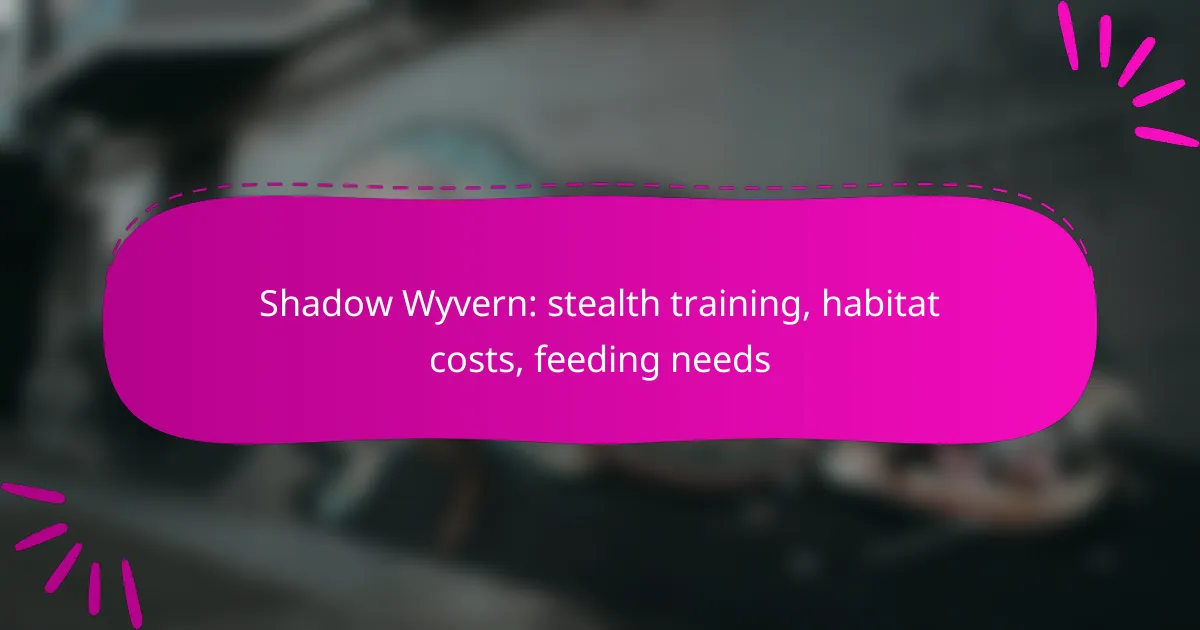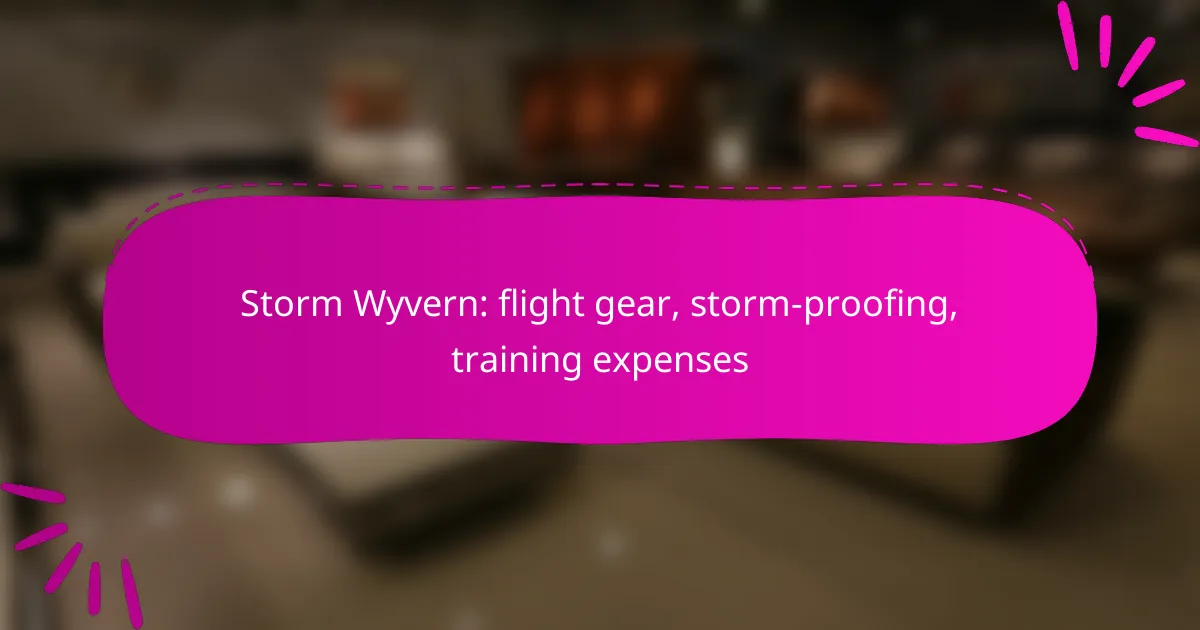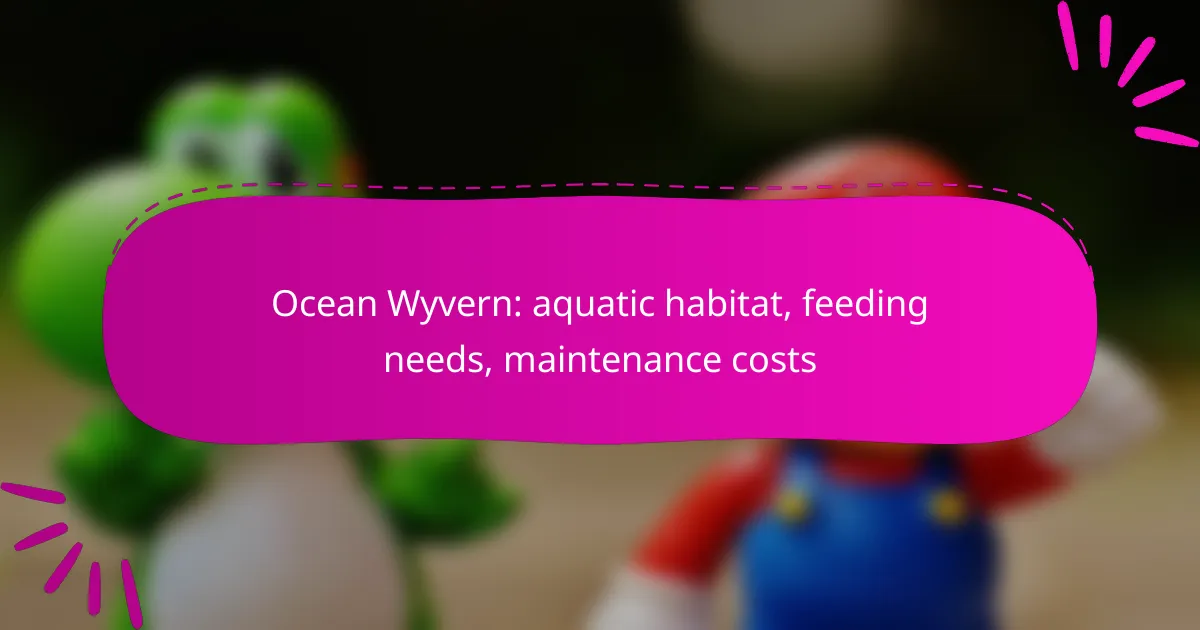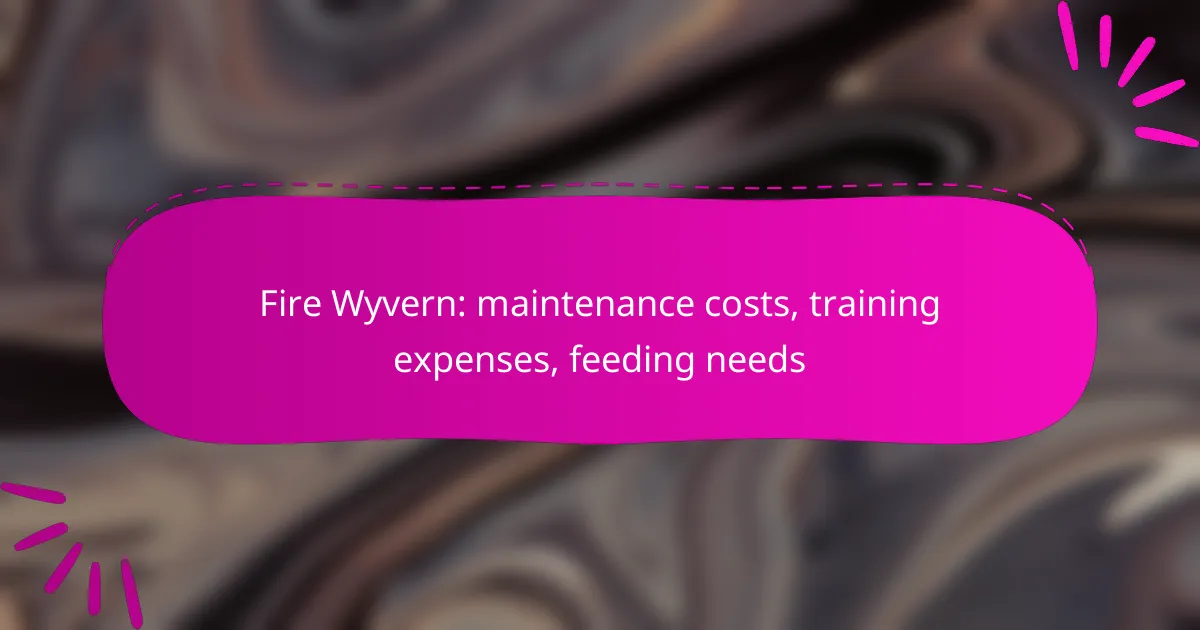The Shadow Wyvern is a fascinating creature that requires specialized training to enhance its natural stealth abilities, focusing on exercises that improve its camouflage and minimize noise. Prospective owners should be aware of the varying habitat costs associated with creating a suitable environment, as well as the high-protein dietary needs essential for maintaining the wyvern’s agility and health.

How to train a Shadow Wyvern for stealth?
Training a Shadow Wyvern for stealth involves a combination of specialized exercises, obstacle navigation, and distraction management. Focus on enhancing their natural abilities to blend into surroundings while minimizing noise and movement.
Utilize shadow-based exercises
Shadow-based exercises are essential for developing a Shadow Wyvern’s ability to move undetected. These exercises can include practicing in dimly lit environments where the wyvern learns to rely on its natural camouflage.
Incorporate activities that encourage the wyvern to remain still and silent, such as hiding behind objects or blending into shadows. Gradually increase the complexity of these exercises to enhance their stealth skills.
Incorporate obstacle courses
Obstacle courses can significantly improve a Shadow Wyvern’s agility and stealth. Design courses that include various terrains and obstacles that require the wyvern to navigate quietly and efficiently.
Use natural elements like trees, rocks, and water features to create a realistic environment. This training helps the wyvern learn to maneuver without drawing attention, simulating real-world scenarios where stealth is critical.
Implement distraction techniques
Distraction techniques are vital for training a Shadow Wyvern to maintain focus amid potential disturbances. Introduce sounds or movements that mimic threats, encouraging the wyvern to remain calm and composed.
Practice with distractions such as rustling leaves or distant animal calls. Reward the wyvern for staying focused, reinforcing the importance of maintaining stealth even when faced with distractions.
Schedule regular training sessions
Regular training sessions are crucial for reinforcing stealth skills in a Shadow Wyvern. Aim for short, frequent sessions to keep the wyvern engaged and responsive to training cues.
Consistency is key; schedule sessions at similar times each week to establish a routine. Monitor progress and adjust the difficulty of exercises as the wyvern becomes more adept at stealth techniques.
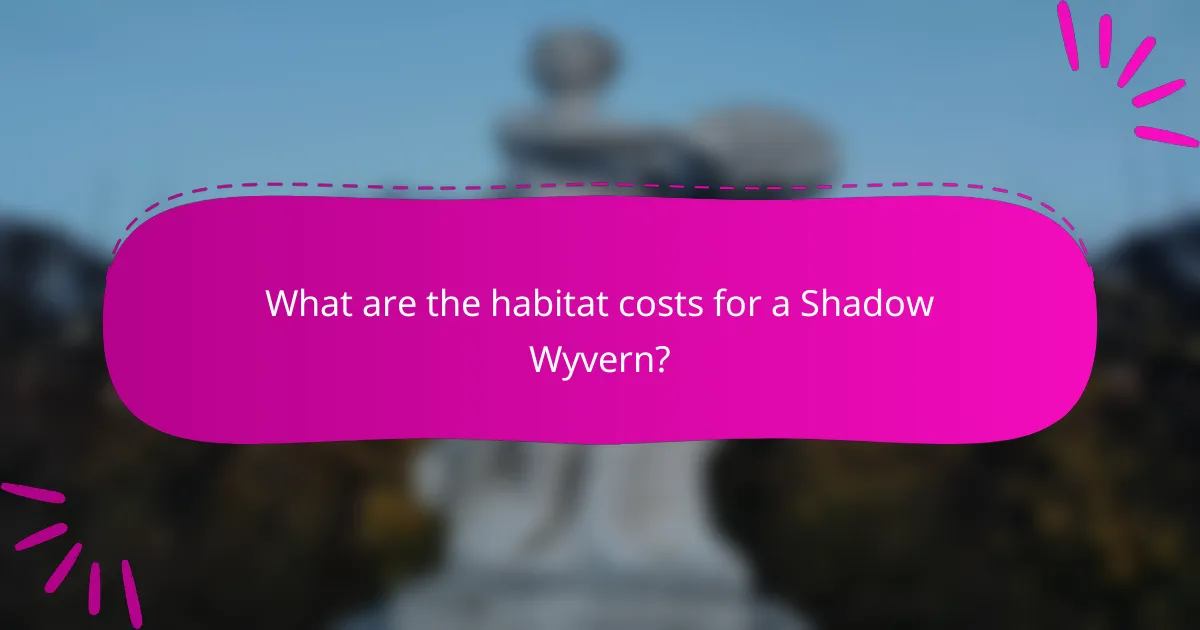
What are the habitat costs for a Shadow Wyvern?
The habitat costs for a Shadow Wyvern can vary significantly based on setup, maintenance, and enrichment needs. Understanding these expenses is crucial for prospective owners to ensure they can provide a suitable environment for their wyvern.
Initial setup expenses
Setting up a habitat for a Shadow Wyvern involves several key expenses. The initial costs may range from a few thousand to several thousand USD, depending on the size and complexity of the enclosure. Essential items include sturdy fencing, temperature control systems, and secure nesting areas.
Consider investing in durable materials that can withstand the wyvern’s natural behaviors. For example, reinforced steel or high-quality wood can be effective, though they may increase upfront costs.
Monthly maintenance costs
Monthly maintenance costs for a Shadow Wyvern habitat typically include utilities, food, and general upkeep. Expect to spend a few hundred to over a thousand USD each month, depending on the size of the wyvern and the habitat’s requirements.
Regular cleaning and repairs are necessary to maintain a safe environment. Budget for these ongoing tasks to avoid unexpected expenses that could arise from neglect.
Environmental enrichment expenses
Environmental enrichment is vital for a Shadow Wyvern’s well-being and can incur additional costs. This may include toys, climbing structures, and interactive feeders, which can collectively cost anywhere from a few dozen to several hundred USD monthly.
Investing in high-quality enrichment items can enhance the wyvern’s physical and mental health. Regularly rotating these items can keep the environment stimulating without requiring constant new purchases.

What are the feeding needs of a Shadow Wyvern?
The feeding needs of a Shadow Wyvern are primarily focused on a high-protein diet that supports its stealthy and agile nature. These creatures thrive on a combination of meat and specialized nutrients to maintain their energy levels and health.
Preferred diet components
Shadow Wyverns typically prefer a diet rich in high-quality proteins, such as small mammals, birds, and certain types of fish. They may also consume insects and other protein sources when necessary. It’s essential to ensure that their diet includes a variety of these components to meet their nutritional requirements.
Feeding frequency requirements
Feeding a Shadow Wyvern should occur at least once every few days, depending on its age and activity level. Younger wyverns may require more frequent feedings, while adults can sustain themselves with less frequent meals. Monitoring their weight and energy levels can help determine the optimal feeding schedule.
Supplemental nutrition options
To enhance the diet of a Shadow Wyvern, consider adding supplements such as vitamins and minerals specifically formulated for reptiles or exotic pets. These can help address any dietary gaps and support overall health. Additionally, providing occasional treats like specialized insect protein powders can offer variety and enrichment.

What are the best habitats for Shadow Wyverns?
The best habitats for Shadow Wyverns are dense, secluded environments that provide ample cover and opportunities for stealth. These areas should mimic their natural habitats, allowing them to thrive while meeting their specific needs for safety and feeding.
Natural habitat characteristics
Shadow Wyverns typically inhabit regions with thick foliage, caves, or mountainous terrains that offer both concealment and hunting grounds. They prefer areas with moderate temperatures and humidity, as these conditions support their stealthy behavior and hunting techniques.
In the wild, these creatures are often found near water sources, which are essential for hydration and attracting prey. The presence of diverse flora and fauna enhances their ability to camouflage and ambush unsuspecting animals.
Recommended enclosure designs
When designing enclosures for Shadow Wyverns, incorporate vertical space and naturalistic features like rocks, logs, and dense plants to simulate their natural habitat. A multi-level structure allows them to climb and hide, which is crucial for their stealth training.
Ensure the enclosure has secure fencing and overhead netting to prevent escape while allowing for adequate ventilation and light. Consider including water features and shaded areas to maintain a comfortable environment that meets their feeding and hydration needs.

How to choose the right training equipment for Shadow Wyverns?
Selecting the appropriate training equipment for Shadow Wyverns is crucial for effective stealth training. Focus on gear that enhances their natural abilities while ensuring safety and comfort during training sessions.
Essential gear for stealth training
When training Shadow Wyverns, essential gear includes lightweight harnesses, silent boots, and specialized training dummies. These items help improve agility and stealth without hindering movement.
Consider using camouflage gear that blends with their natural habitat, which can enhance their stealth capabilities. Additionally, training tools like scent masks can help simulate real-world scenarios, allowing for more effective training.
Safety equipment considerations
Safety should be a top priority when selecting equipment for Shadow Wyverns. Ensure that all harnesses and gear are made from durable, non-abrasive materials to prevent injury during training.
Regularly inspect equipment for wear and tear, and replace any damaged items immediately. It’s also wise to have first-aid supplies on hand for any minor injuries that may occur during training sessions.

What are common health issues in Shadow Wyverns?
Shadow Wyverns can experience various health issues, primarily related to their unique habitat and feeding needs. Common problems include respiratory infections, nutritional deficiencies, and stress-related conditions due to improper care or environment.
Signs of illness to watch for
Monitoring your Shadow Wyvern for signs of illness is crucial. Look for symptoms such as lethargy, loss of appetite, abnormal breathing patterns, or changes in behavior. Additionally, any unusual discharge from the eyes or nose can indicate health problems.
Regularly check for physical signs like weight loss or changes in skin and scales, which can signal underlying issues. Early detection can significantly improve treatment outcomes.
Preventative care tips
To maintain your Shadow Wyvern’s health, ensure a balanced diet rich in essential nutrients. Incorporate a variety of proteins and vitamins, and avoid overfeeding, which can lead to obesity and related health issues.
Regular veterinary check-ups are vital for early detection of potential health problems. Create a clean and stress-free environment, minimizing exposure to harsh weather and pollutants, which can contribute to respiratory issues.

How to create a balanced diet for Shadow Wyverns?
Creating a balanced diet for Shadow Wyverns involves providing a mix of proteins, fats, and carbohydrates tailored to their unique needs. Focus on high-quality meats, fruits, and specialized supplements to ensure optimal health and performance.
Caloric intake guidelines
Shadow Wyverns require a caloric intake that varies based on their age, size, and activity level. Generally, adult wyverns need between 3,000 to 5,000 calories daily, while younger ones may require significantly less, around 1,500 to 2,500 calories.
To maintain a healthy weight, monitor their body condition and adjust their food portions accordingly. Providing a mix of high-energy foods such as lean meats and nutrient-rich fruits can help meet their caloric needs effectively.
Consider using a feeding schedule that includes multiple smaller meals throughout the day, which can aid in digestion and energy management. Avoid overfeeding, as this can lead to obesity and related health issues.






